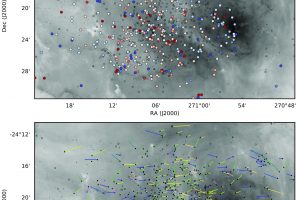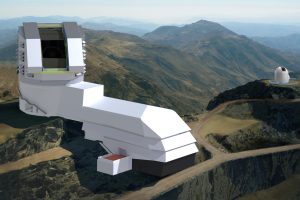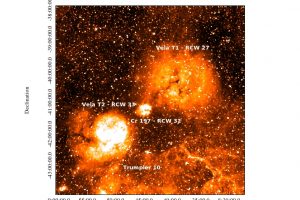Dynamic and expansion of stellar clusters. The study: “The Gaia-ESO Survey: asymmetric expansion of the Lagoon Nebula cluster NGC 6530 from GES and Gaia DR2” of N. J. Wright (Keele University) recently appeared on MNRAS

Despite a significant fraction of stars form in stellar clusters counting hundreds to thousands of members, almost all the stars we observe today in the Milky Way is not associated to any stellar cluster. This occurs because newborn stellar clusters are typically dispersed in a few million of years by several intervening processes, such as the gravitational interaction among cluster
» Read more

